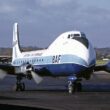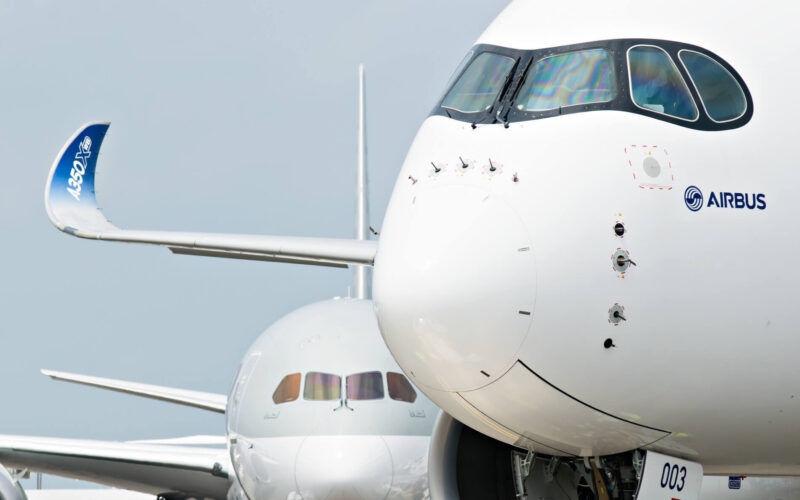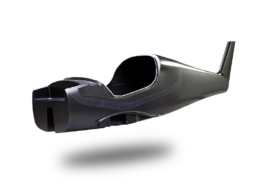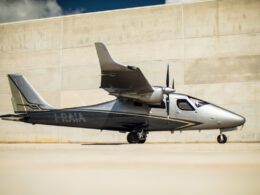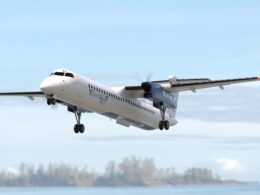The tariff war that began in 2004 was continued, when the European Commission (EC), in response to the United States’ own new set of tariffs, introduced counter-measures on November 9, 2020. The tit-for-tat tariff war, primarily focused on allegations of illegal subsidies to both Airbus and Boeing by the conflicting parties, has entered a new phase.
“We have made clear all along that we want to settle this long-running issue. Regrettably, due to lack of progress with the U.S., we had no other choice but to impose these countermeasures,” stated executive Vice-President for an Economy that Works for People and Commissioner for Trade Valdis Dombrovskis on November 9, 2020. The remark was made in response to the EC announced counter-measures.
EC’s tariffs, according to the authority’s statement, are “strictly mirroring the countermeasures imposed by the United States in the context of the World Trade Organization (WTO) case on subsidies to Airbus.” In addition to tariffs of 25% to various agricultural and industrial products, a 15% tariff was imposed on commercial aircraft produced in the United States, starting from November 10, 2020.
What does this mean for Boeing?
Exposure to the EU
While Airbus has also bore the brunt of the crisis, it is presumably less impacted than Boeing. The US planemaker was battling a crisis of its own, as the Boeing 737 MAX, one of its cash-cow products, has been grounded since March 2019.
While the un-grounding is seemingly just around the corner, Boeing has repeatedly bled cash ever since the aircraft was grounded and the company was not able to coup delivery payments. Much like with the current crisis, at first, the consensus was that this would quickly turn a corner. Alas, it was not meant to be and Boeing’s backlog was being fulfilled, yet did not shrink. Up until January 2020, the company was breaking sweat at Renton, Washington, the United States, and building aircraft that could not be delivered.
As of November 10, 2020, Boeing has 395 built 737 MAX aircraft that are yet to be delivered to customers. Production has been restarted since late-May 2020, and the first MAX to fly after the restart of production was N338ST, destined to American Airlines (A1G) (AAL). All in all, Boeing has built 782 of the newest iteration of the 737, including already-delivered frames prior to the grounding in March 2019.
Out of the 782, 87 Boeing 737 MAX aircraft belong to European Union-based airlines, with 53 jets still undelivered. The undelivered jets do not include pending deliveries to United Kingdom-based carriers, as it is unclear what kind of trade policy the UK government will choose after Brexit is finally over on December 31, 2020.
Further down the production line, there are 423 unfilled orders for the Boeing 737 MAX that are supposed to go to EU-based operators, including leasing companies that will still have to register the aircraft before transferring them to an airline operator.
Other Boeing models, including the 777, the 777X and the 787 have a total of 90 aircraft in the backlog that are destined for airlines based in the EU. With the MAX, a total of 513 unfilled orders are destined to member states’ airlines, or 10% of the total backlog prior to the ASC 606 Adjustment, according to Boeing data.
Burden of debt
While exposure to the recently imposed tariffs is not major by any means, there are two things to consider.
Boeing’s fight with two crises at the same time has put the company in peril. Its cash reserves on September 30, 2020, were $10.5 billion, while at the end of 2019 it was $9.7 billion. A marginal improvement, considering that the long-term debt that Boeing has on its shoulders has grown like the beanstalk from Jack and the Beanstalk: from $19.6 billion at the end of 2019 to $57.3 billion at the end of Q3 2020. Shareholders’ equity, which represents a company’s ability to cover its liabilities with its assets, grew from minus $8.6 billion in December 2019 to $11.8 billion at the end of the last quarter. Prior to the two current crises, the planemaker shareholders’ equity was $339 million and $1.6 billion at the end of 2018 and 2017, respectively.
As a result, it needs as much cash as airlines are able to give out in order to eventually repay the debt and shift the balance of its liquidity, including shareholders’ equity.
Yet Boeing is not the only company within the aviation industry burdened with debt. According to the International Air Transport Association (IATA) data, out of $123 billion of granted government aid, $67 billion of that will create new liabilities for airlines in the future. The majority of the $67 billion is state-guaranteed loans. Sure, they do allow companies to borrow money when private entities would be wary due to the risk of eventual insolvency, but in the long-term, companies do need to repay them.
For instance, Lufthansa (LHAB) (LHA) went through a saga of its own regarding a whopping €9 billion ($9.7 billion) state aid package from the German Federal Economic Stabilization Fund (Wirtschafts Stabilisierungsfonds – WSF). The German airline went from refusing to take up state aid due to conditions imposed by the German government and later the European Commission, warning it might choose insolvency instead of help, to finally caving in and accepting conditions imposed by national and continental lawmakers. Eventually, the company called the WSF stabilization measures something that secured the “existence of Lufthansa Group.”
On the other hand, Ryanair chief executive Michael O’Leary called the German airline a “crack cocaine junkie” when Lufthansa’s (LHAB) (LHA) plans to obtain state aid were in their early infancy.
Nevertheless, Germany’s state aid, including the help of other governments whereupon Lufthansa Group subsidiaries are based, does “not rule out individual Group companies from becoming insolvent,” highlighted the company as one of the risk factors going forward in its Q3 2020 financial report.
Shaky future
Yet the current downturn is seemingly set to have a long-lasting impact on the industry, including demand for air travel. As a result, both manufacturers could suffer.
“In addition, the Company is preparing other measures to adapt the long-term scope of business to the lower demand, which is currently expected to be lasting,” Lufthansa (LHAB) (LHA) highlighted another risk element going forward in the same report.
Lufthansa (LHAB) (LHA) could be used as one example, yet throughout the industry, the same tune has taken over the hit charts – a lot of long-term debt. Another case in point could be American Airlines (A1G) (AAL), which took up a $7.5 billion loan under the Coronavirus Aid, Relief, and Economic Security (CARES) act. The largest airline in the world prior to the current crisis warranted the loan with non-voting right shares. The warrants, which lasting for five years, will be repaid by either a net share settlement or cash, whatever option American Airlines (A1G) (AAL) decides. All in all, AA has accumulated an astounding $29.5 billion of debt.
These might be some of the most extreme cases in the industry. On the other side of the debt coin, some airlines are more suited to handle such fluctuations in revenue much better. Ryanair, including bonds, has €3.5 billion ($4.1 billion) of long-term debt, despite it being on a parallel level in terms of passenger numbers as Lufthansa (LHAB) (LHA) (152 million versus 145 million in 2019). Importantly, its shareholders’ equity has only gone up during the crisis: from €4.91 billion ($5.80 billion) to €4.97 billion ($5.87 billion), meaning it has minimized its liabilities. Meanwhile, American Airlines (A1G) (AAL) saw its already negative stockholders’ equity dwindle every quarter throughout 2020. From a -$2.6 billion in Q1 2020, to -$3.1 billion the next, and finally, as of September 30, 2020, the deficit stood at $5.5 billion.
This leads to a situation where airlines would rather stay solvent than to take in new aircraft. The tariffs do not help to mitigate the situation.
“In October 2019, the Office of the U.S. Trade Representative announced a 10% tariff on new aircraft imported from Europe, which was subsequently increased to 15% in February 2020. We are continuing to evaluate the impact of this announcement on our future Airbus deliveries,” read Delta Air Lines Q3 2020 report, released on October 13, 2020. American Airlines (A1G) (AAL) quarterly report noted that “if and to the extent these tariffs are imposed on us without any available means for us to mitigate or pass on the burden of these tariffs to Airbus,” the price of aircraft deliveries would only go up.
Cash is king
Airlines are not the only ones that need cash. Manufacturers, including their suppliers, also rely on aircraft sales.
If the debt burden that some companies have put on to weather the storm prevents them from ordering fresh off the shelf jets that also impacts both Airbus and Boeing. Airbus net cash position went from €12.5 billion ($14.7 billion) to a debt position of €242 million ($285.4 million). Much like with Boeing, the European manufacturer shareholders’ equity shrank from €5.9 billion ($6.9 billion) at the start of the year to €1.9 billion ($2.2 billion) as of September 30, 2020. During the same period, long-term debt grew by €5.8 billion ($6.8 billion), going from €8.1 billion ($9.5 billion) to €13.9 billion ($16.4 billion).
There is no doubt that both manufacturers will eventually have to repay their debts and be able to develop new products. After all, Airbus committed to develop an emissions-free aircraft by 2035 in exchange for a state aid package from the French government. The development of a clean-sheet design or even an emissions-free derivative from the current family of aircraft is a costly venture that requires cash.
Boeing is in a similar position. While to no fault of strings attached to state aid, it was fairly clear that the US-based plane maker needed to develop two clean-sheet designs in order to be able to compete with Airbus. So far so, Boeing has no answer to the A220 family or the A321XLR. Rumors were seemingly always present that the manufacturer has already begun to develop the Future Small Airplane (FSA) and the New Mid-Market Airplane (NMA). Those plans were laid to rest in January 2020, when Boeing chief executive David Calhoun stated that the company was “going to start with a clean sheet of paper again.”
“I want to make sure everyone understands that me not immediately signing up to the NMA is me not wanting to do new airplanes; we’ll do one,” Calhoun added. The FSA development could have been pushed back with the Boeing-Embraer deal. Unfortunately, it collapsed in April 2020.
Curveball originating in Mobile
However, Airbus has an advantage over Boeing in the tariff war.
The European manufacturer has two Final Assembly Lines (FAL) located in the United States, namely in Mobile, Alabama, where the Airbus A320 and Airbus A220 family aircraft are assembled and subsequently delivered. The site broke ground in April 2013, opened its doors in September 2015 and finally delivered the first Mobile-built Airbus A320 family aircraft in April 2016. The first aircraft, the Airbus A321, was delivered to JetBlue (JBLU). The first Airbus A220 left its sweet home as Delta Air Lines took in the first US-assembled A220 in October 2020.
Another curveball could come from Tianjin, China, where Airbus has also established a FAL. The facility delivered its 500th Airbus A320 family aircraft on October 29, 2020. The Chinese facility not only assembles A320s but also has a wide-body Completion and Delivery Centre (C&DC) which is currently able to perform the A330 cabin installations, painting and production flight testing. In addition to the A330 capabilities, Airbus plans to deliver its first A350 out of Tianjin in Q1 2021. While that is a very important step in undermining Boeing’s presence in China, it could also benefit US-based airlines if Airbus were to deliver its wide-body aircraft from the facility amidst warming tensions in the China-US trade war. While the latter has imposed tariffs on aircraft parts including engines, if the newly-elected administration looked at the conflict with China, much could change and provide Airbus with another advantage.
The same administration could also look to stop the tit-for-tat tariff war with the European Union, leaving the theory with a wide range of “what if’s”.
Conflict resolution
Aviation would not be aviation if for its ingenuity. Delta Air Lines, for example, took delivery of an Airbus A330-900neo in February 2020. Instead of landing in Atlanta Hartsfield-Jackson International Airport, Delta’s main hub, the aircraft landed in Tokyo Narita International Airport (NRT) in order to avoid import taxes. Ever since, the A330neo has flown between Seattle and Amsterdam, Tokyo and Seoul, flightradar24.com data shows. Despite the ingenuity, such a delivery could reduce the flexibility of an airline in terms of aircraft operation, including a much more difficult process of accepting an aircraft and is definitely not an ideal solution.
Boeing has taken the step to repeal tax breaks granted by Washington State, where the majority of its commercial aircraft assembly sites are located. In March 2020, the process concluded, as state legislators formally repealed the tax breaks that helped Boeing build both the 787 and the 777X.
“Today’s repeal by Washington State of its aerospace business and occupation tax rate brings the United States into full WTO compliance by fixing the single finding against the U.S.,” read a statement by the company at the time. Unfortunately, the European side of the conflict saw at least 10 points of conflict with the Subsidies and Countervailing Measures (SCM) in its initial complaint to the WTO in January 2006.
That is not to say that Airbus has been stubborn. In July 2020, the company renegotiated the Repayable Launch Investment (RLI) with the French and Spanish governments. The RLI helped the company launch the Airbus A350 to compete with the Boeing 787. The initial complaint by the United States in October 2004 alleged that Airbus received illegal subsidies on all products across its lineup, excluding the yet-to-be-announced A350.
“Removing these tariffs is a win-win for both sides, especially with the pandemic wreaking havoc on our economies. We now have an opportunity to reboot our transatlantic cooperation and work together towards our shared goals,” concluded Valdis Dombrovskis, Executive Vice-President for an Economy that Works for People and Commissioner for Trade of the European Commission, on November 9, 2020, a day before EU’s own counter-tariffs kicked in.
ARTICLE:

